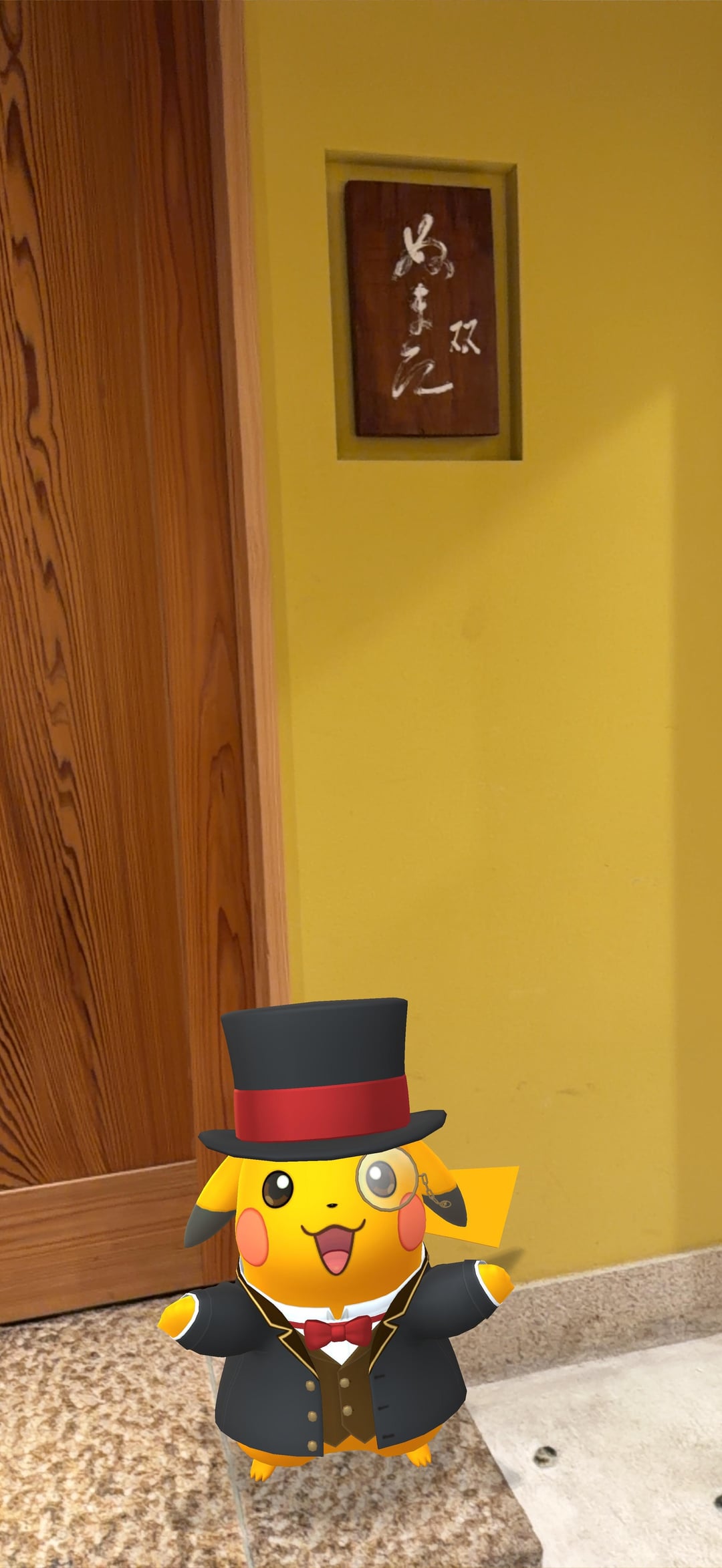
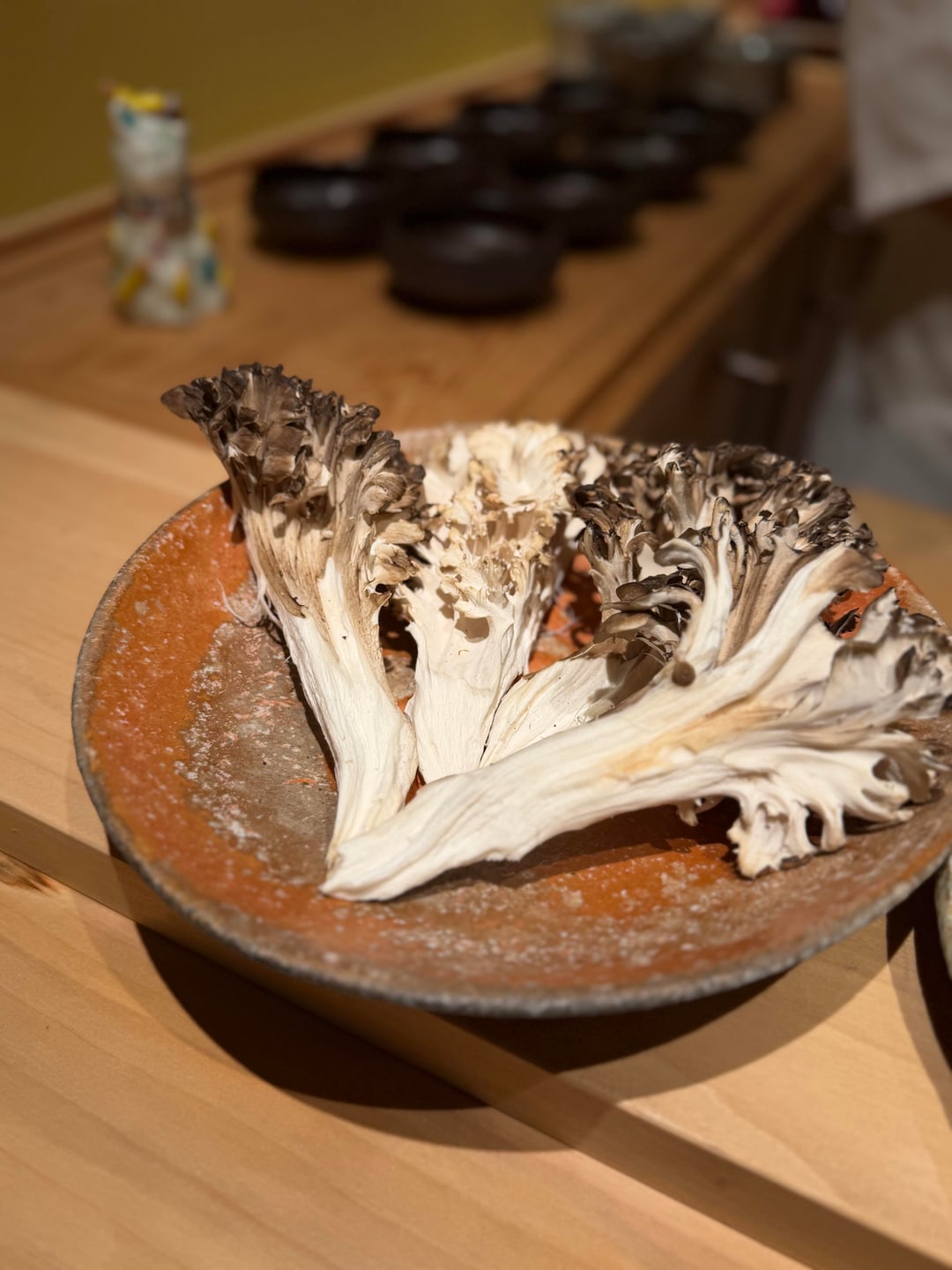
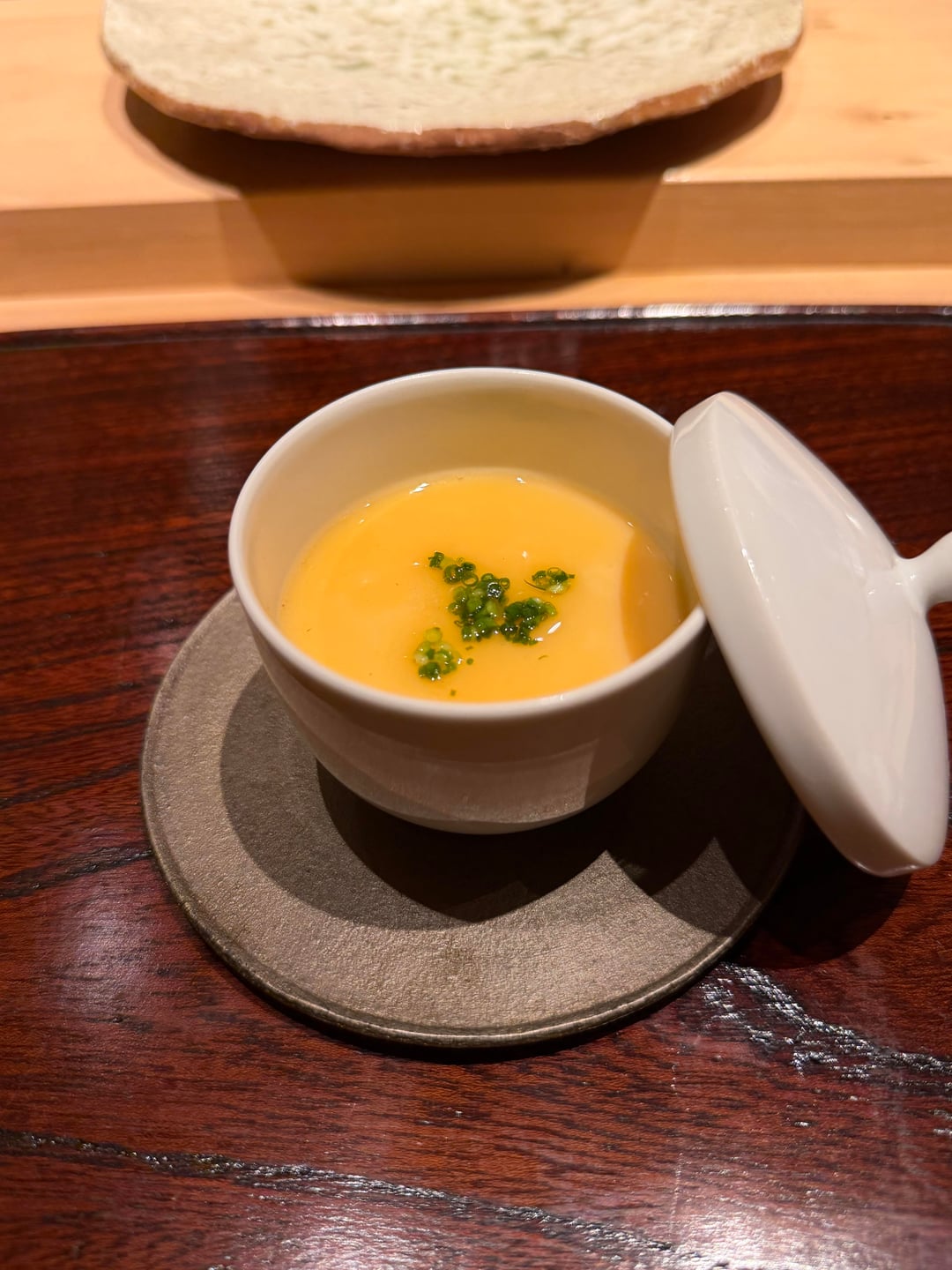
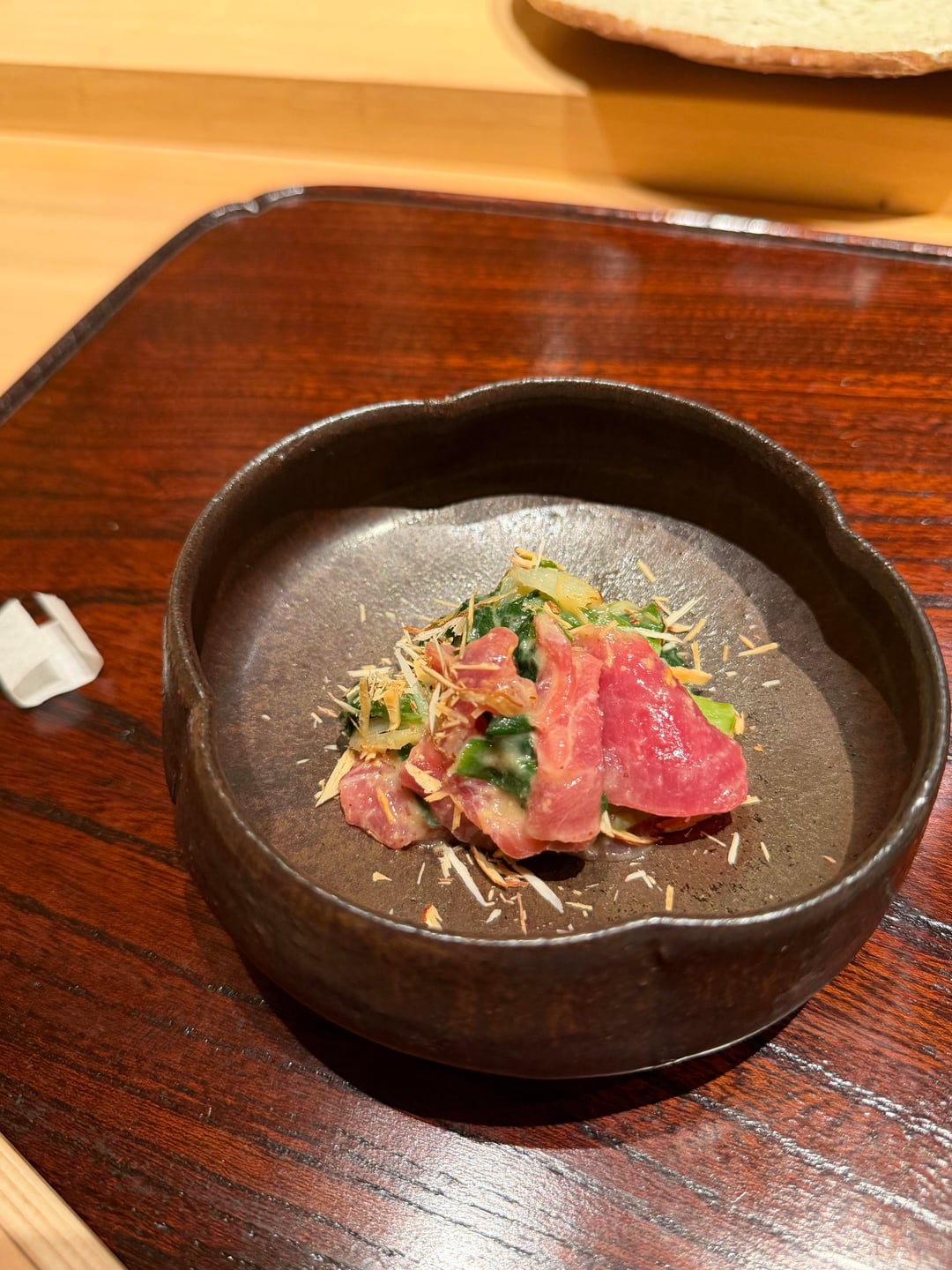
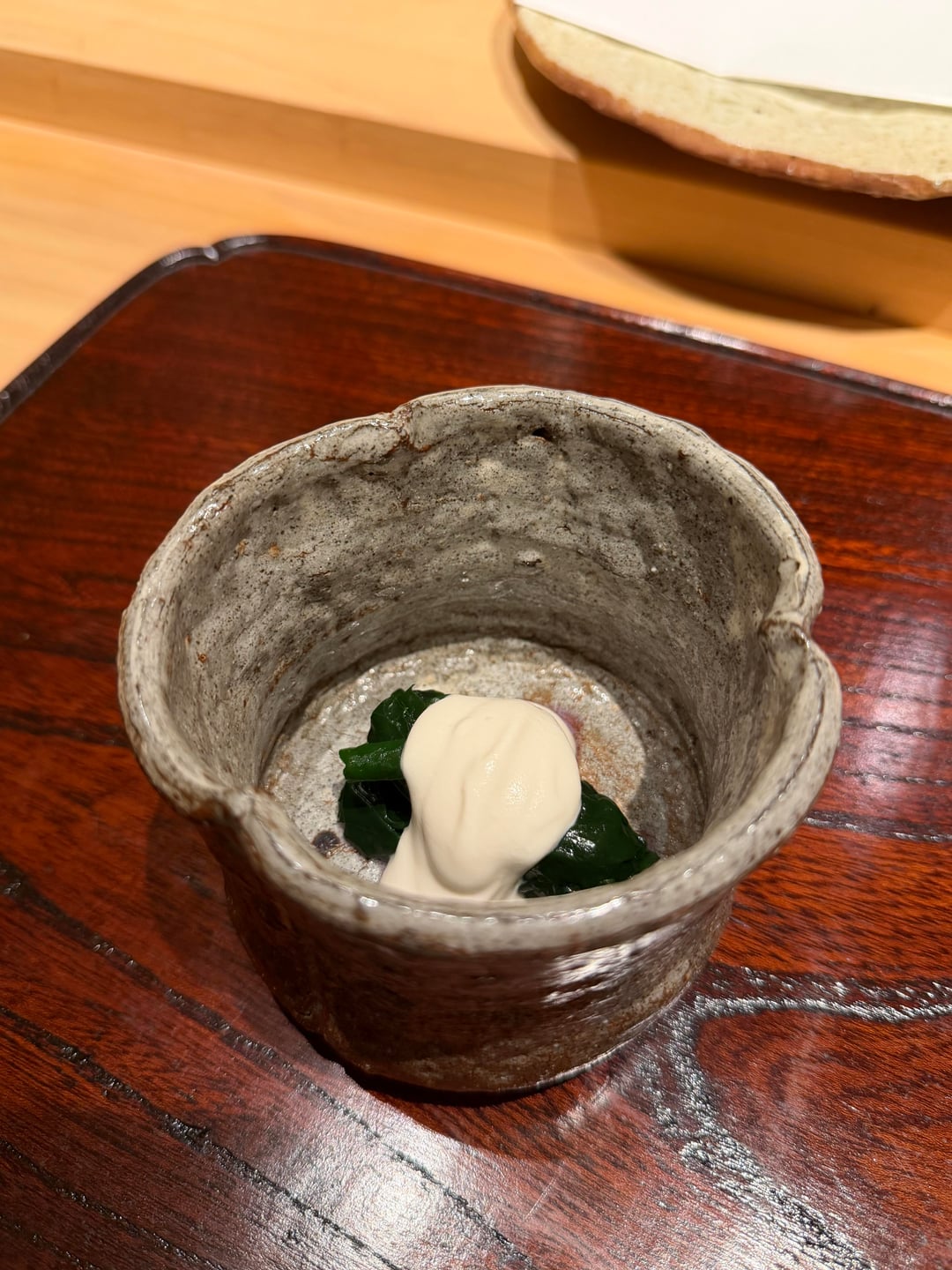
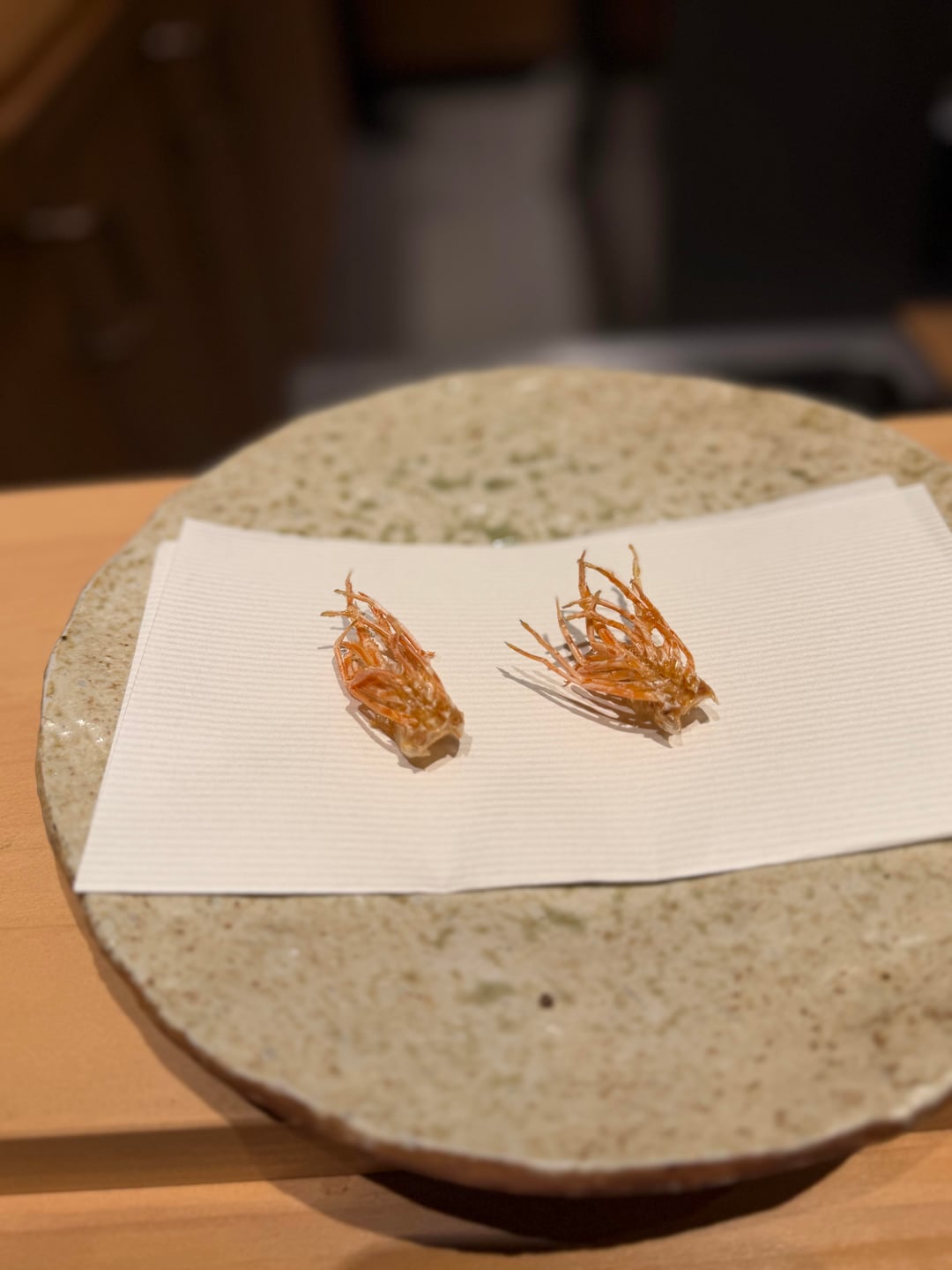
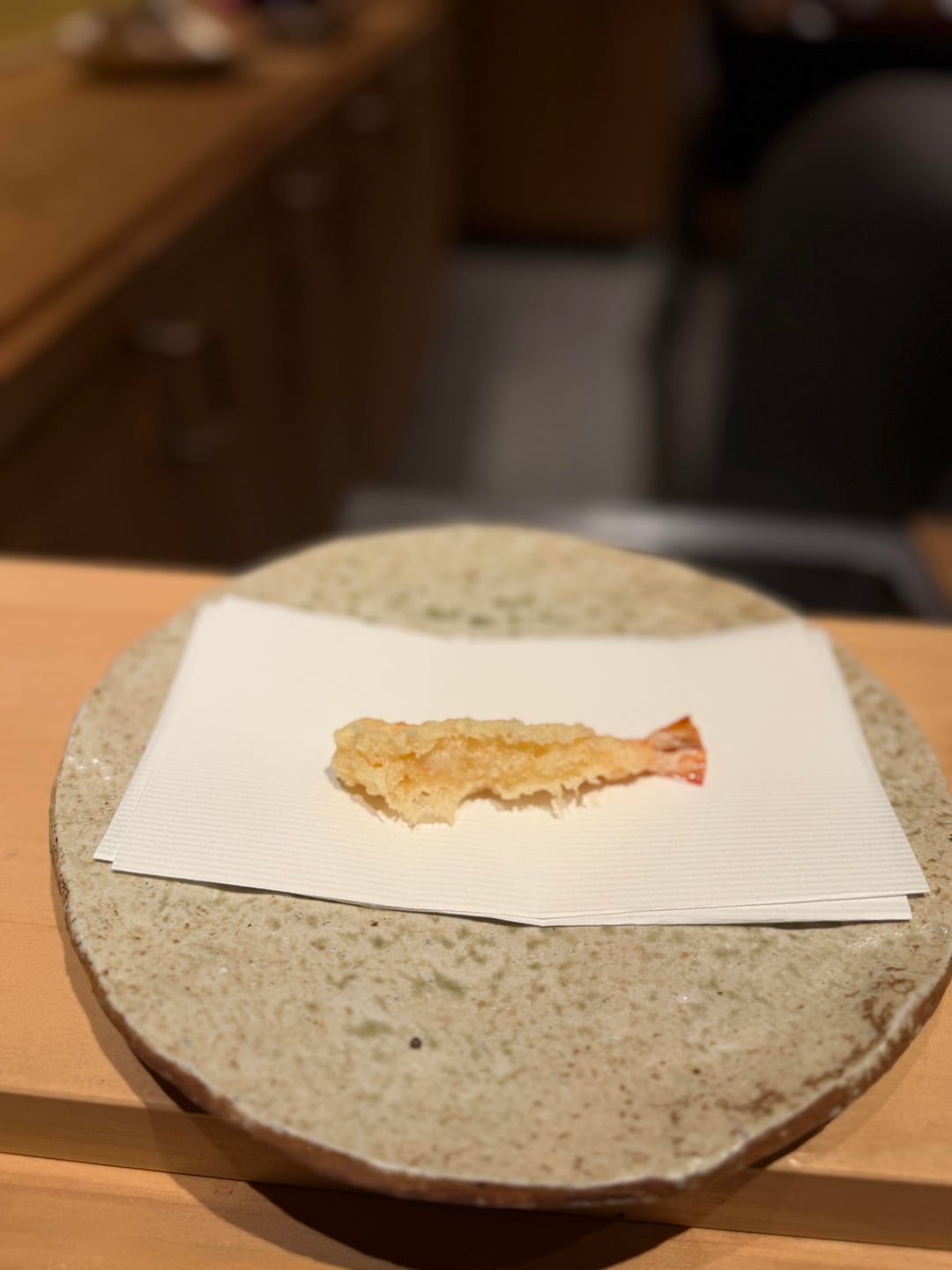
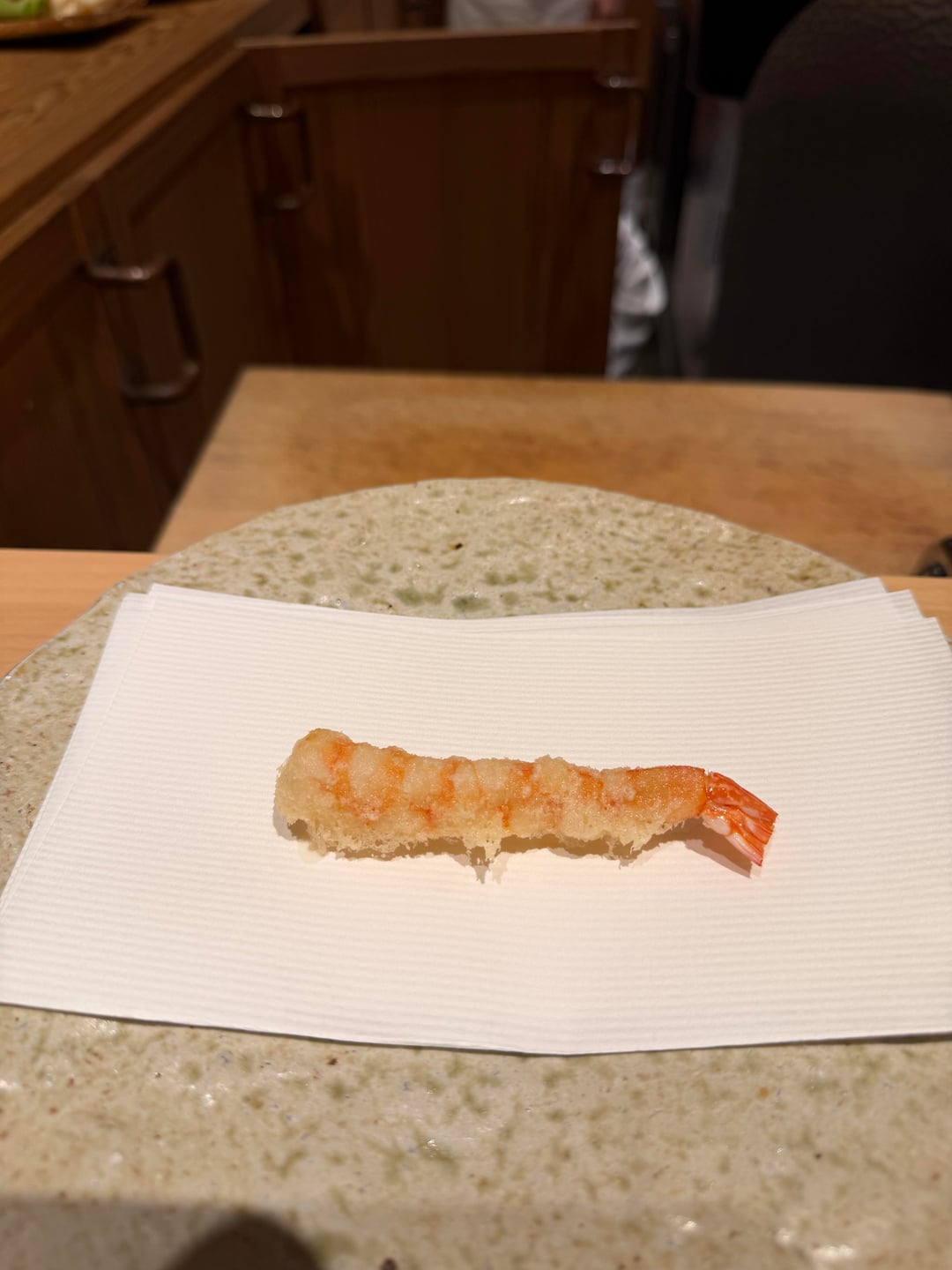
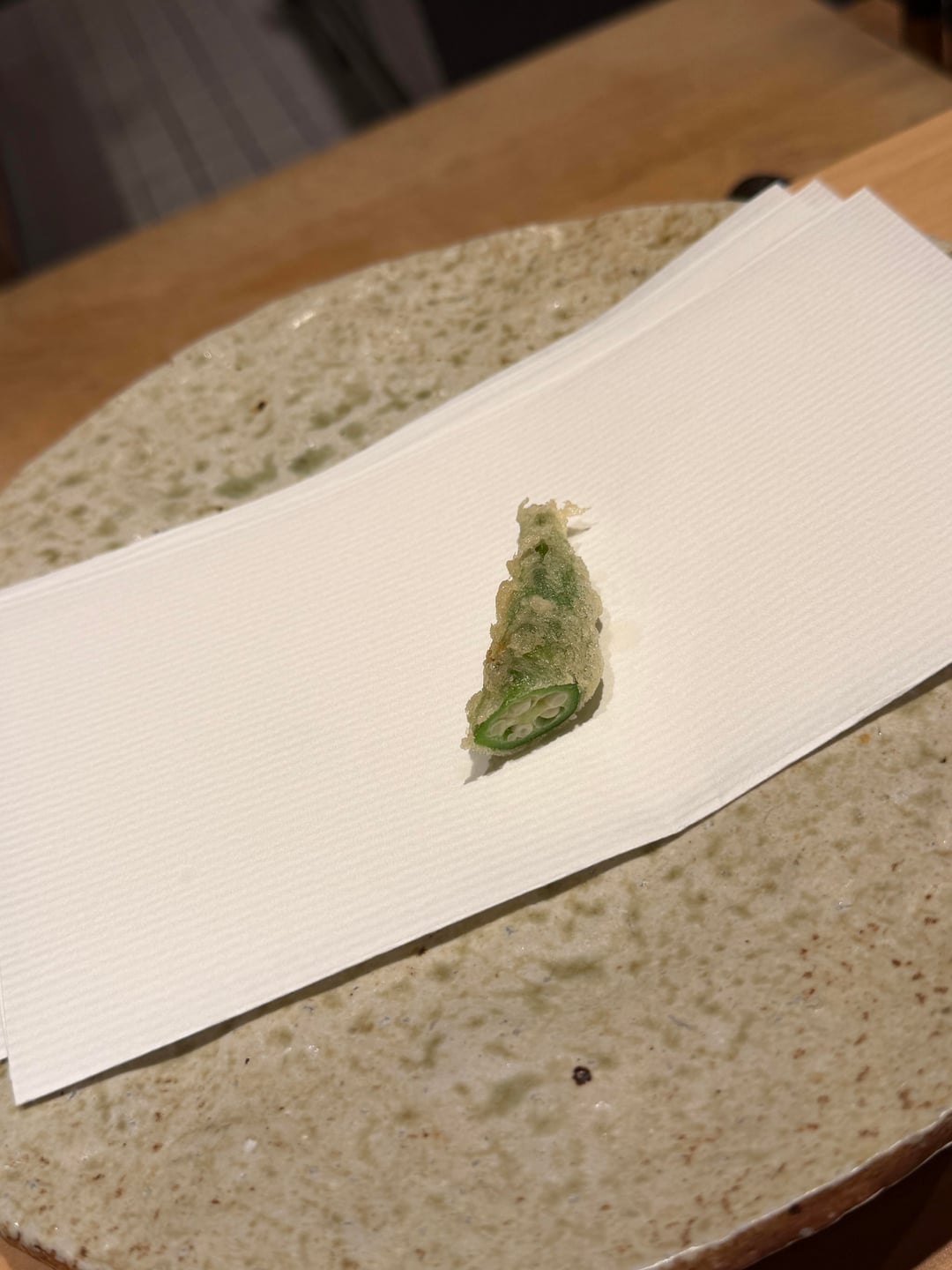
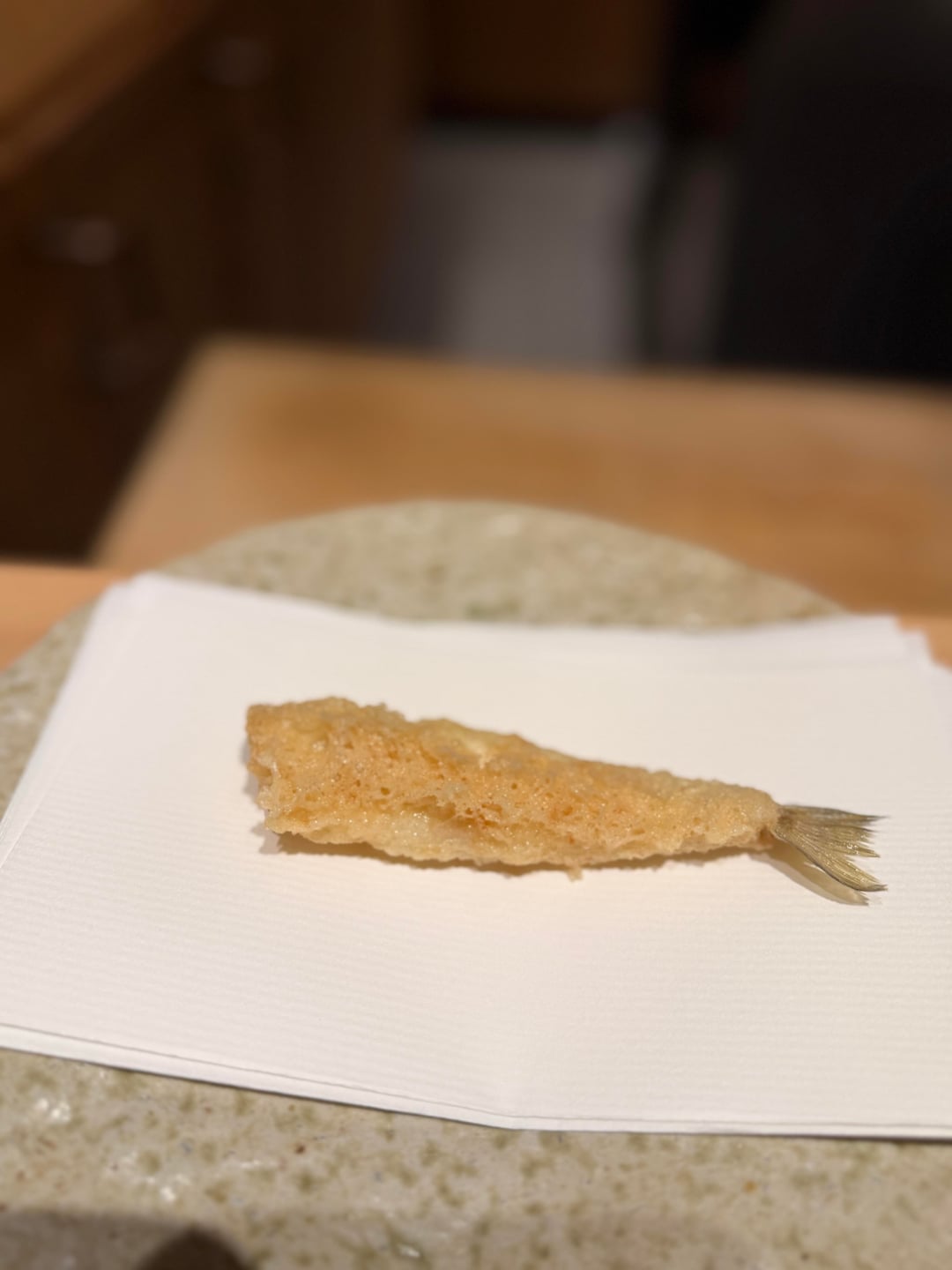
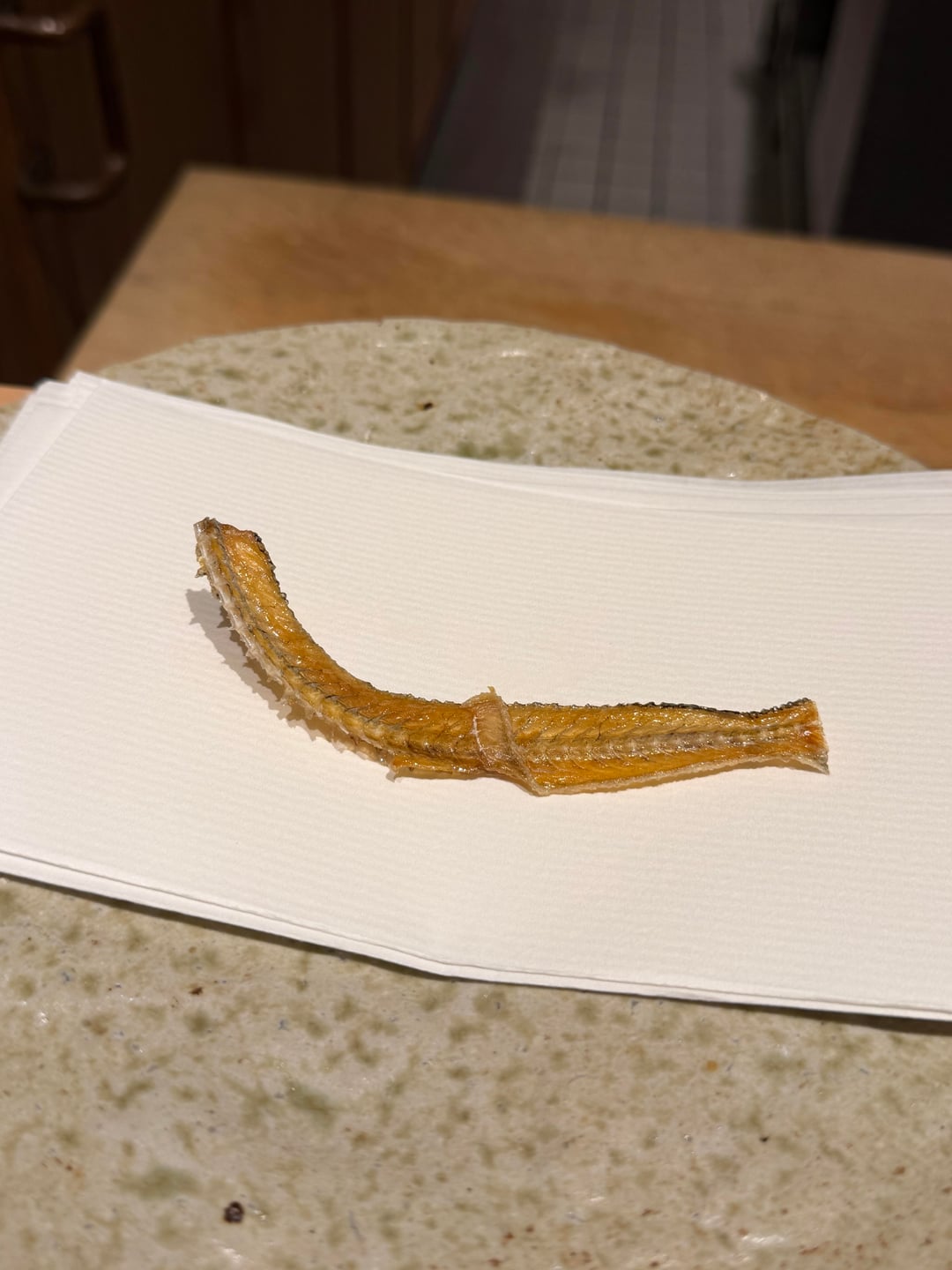
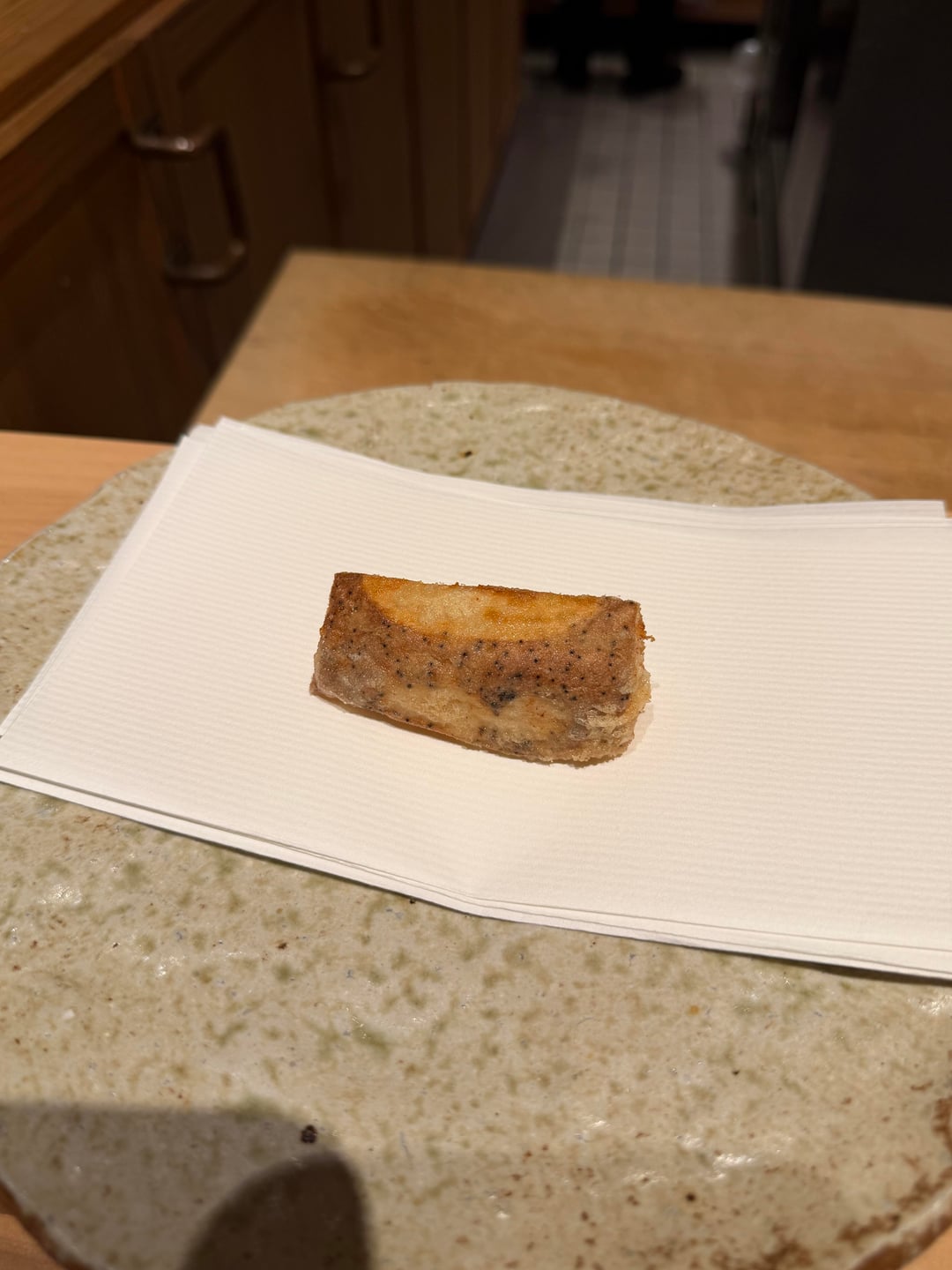
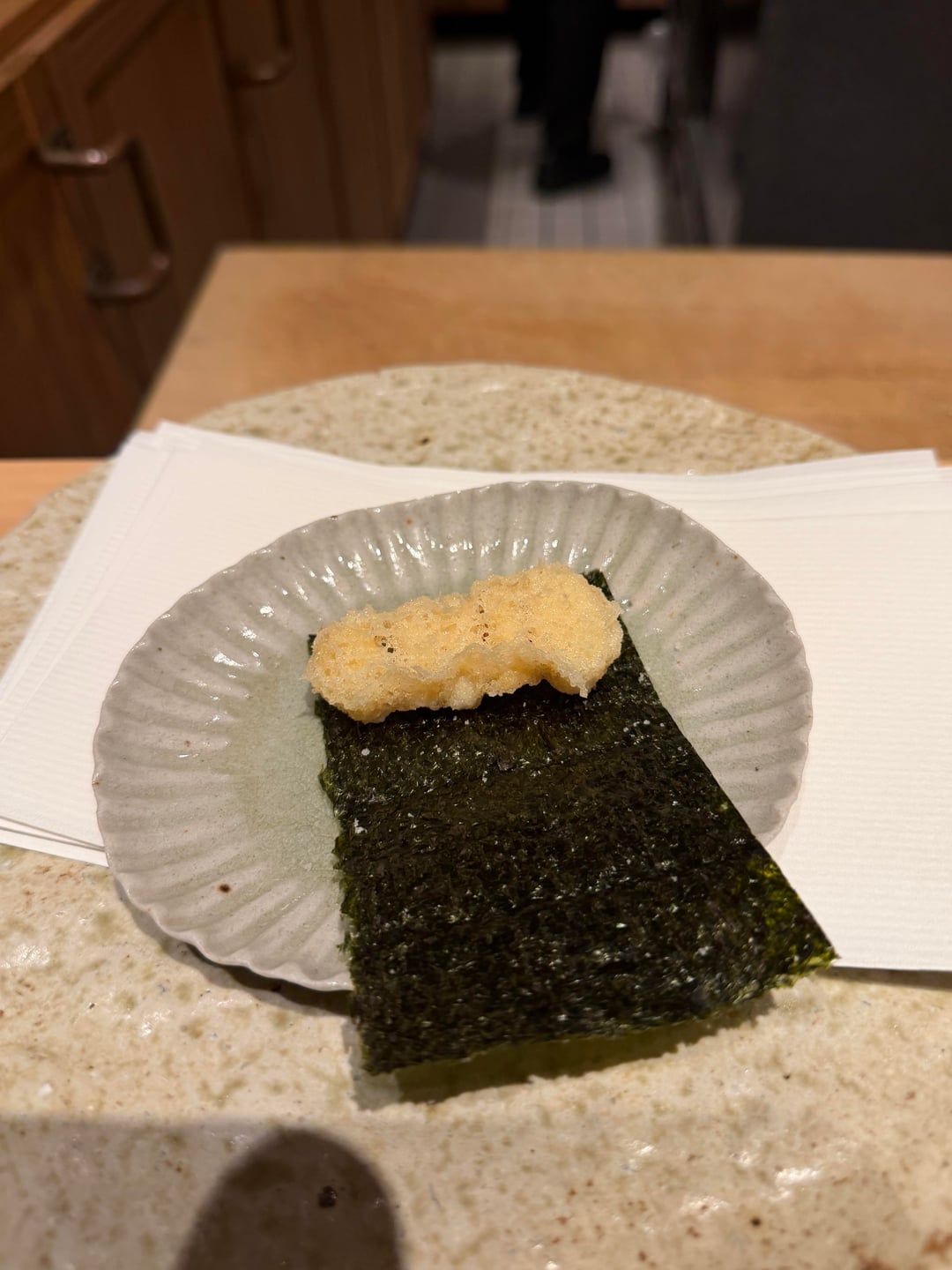
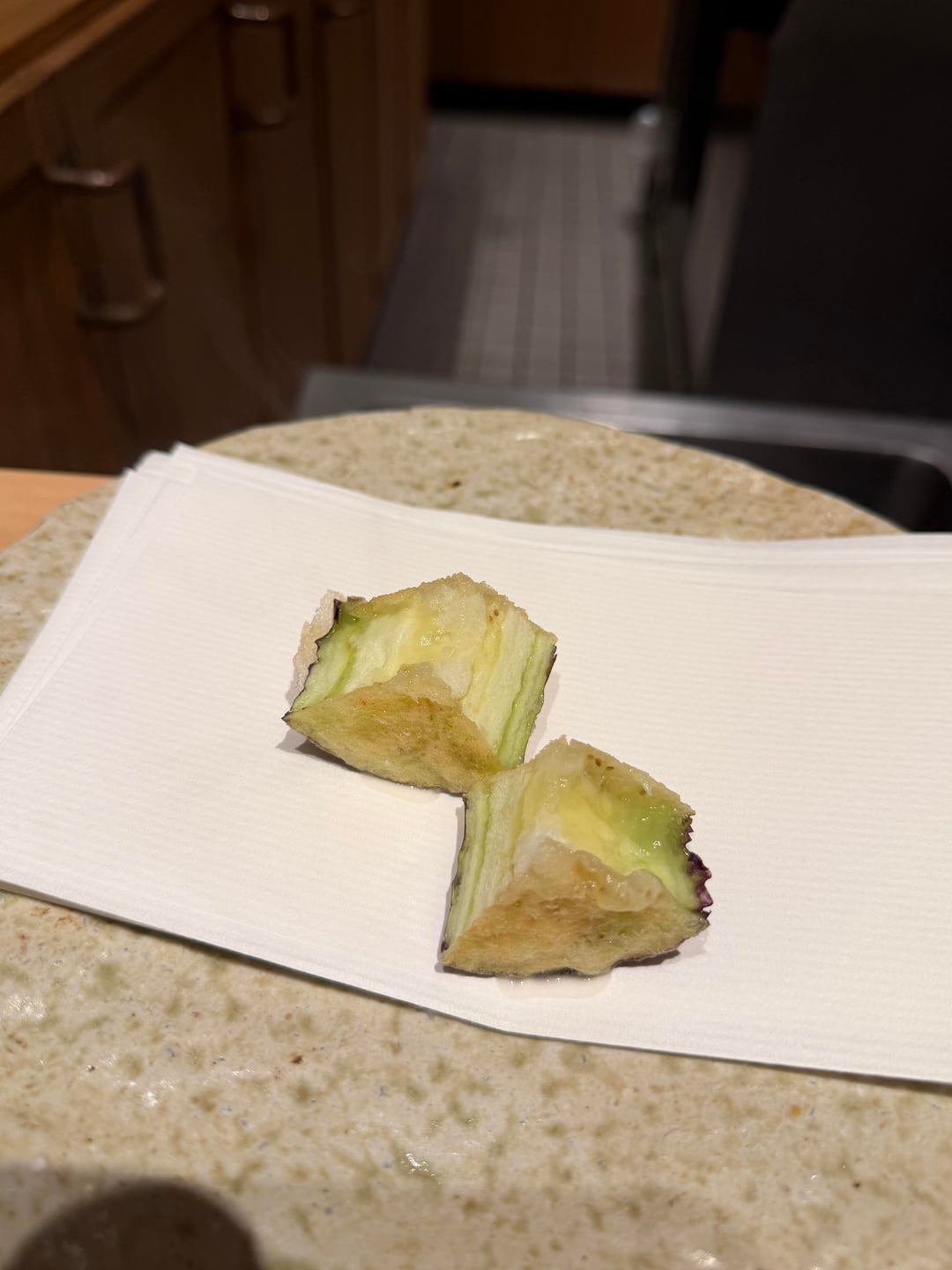
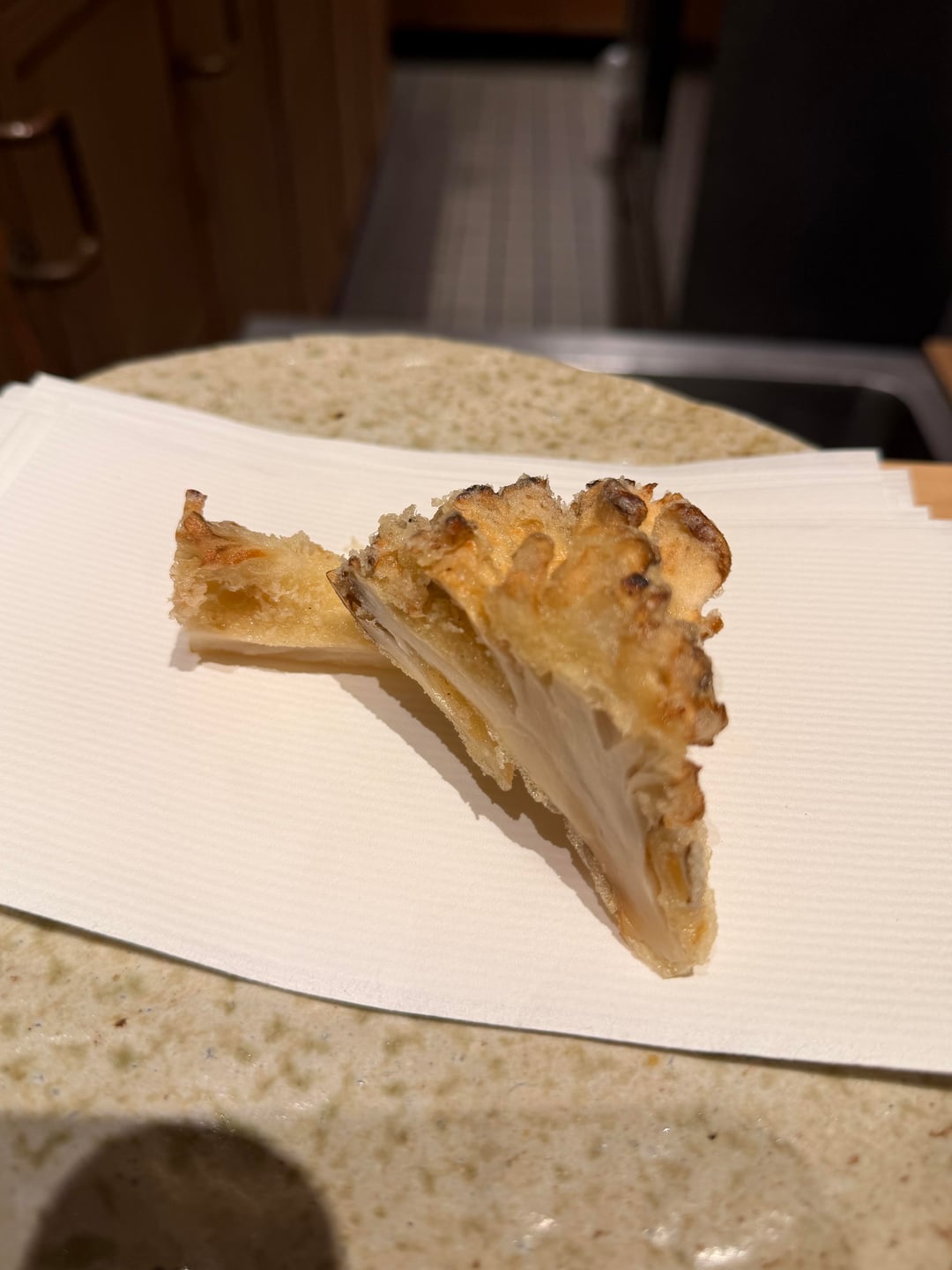
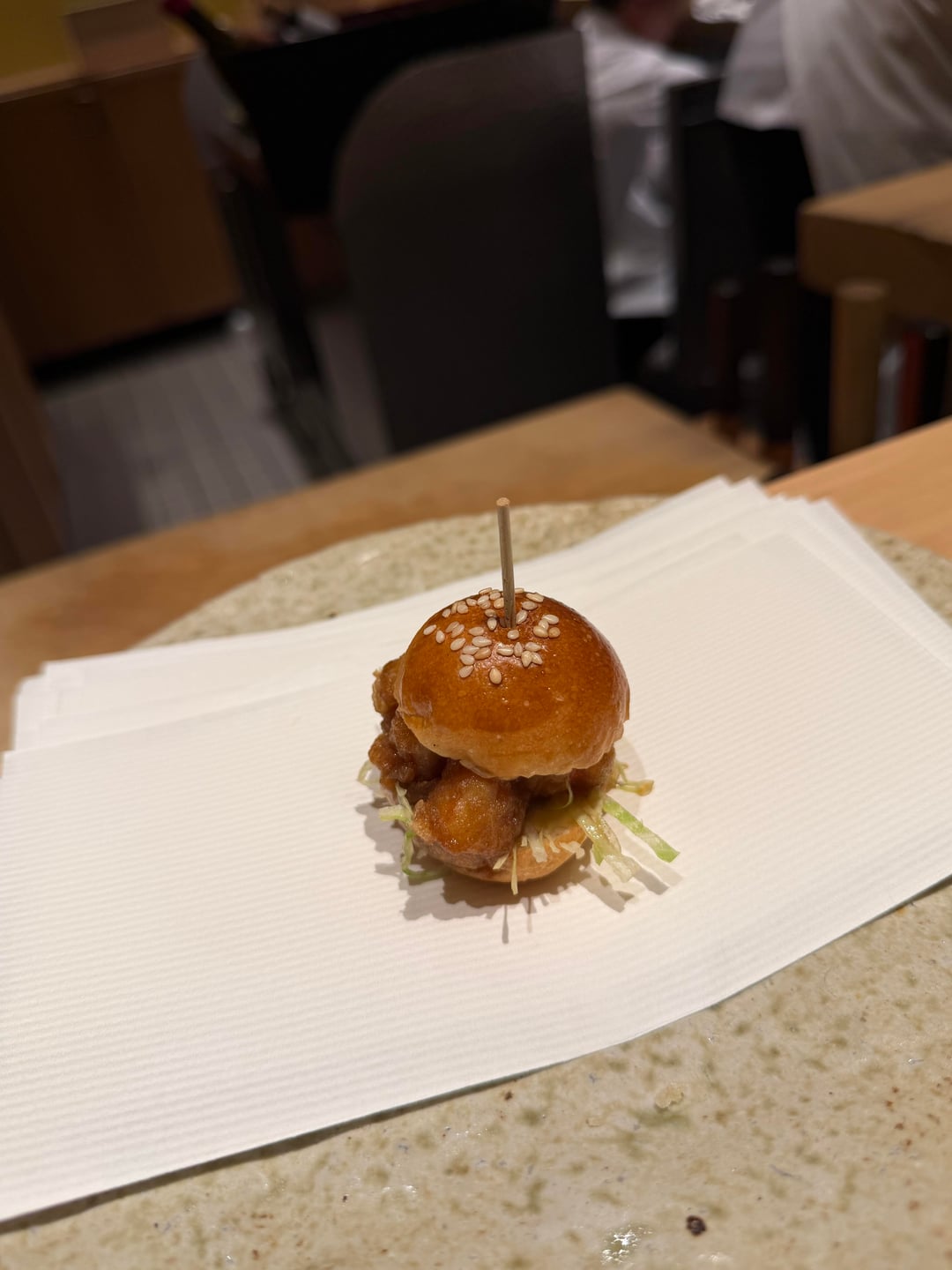
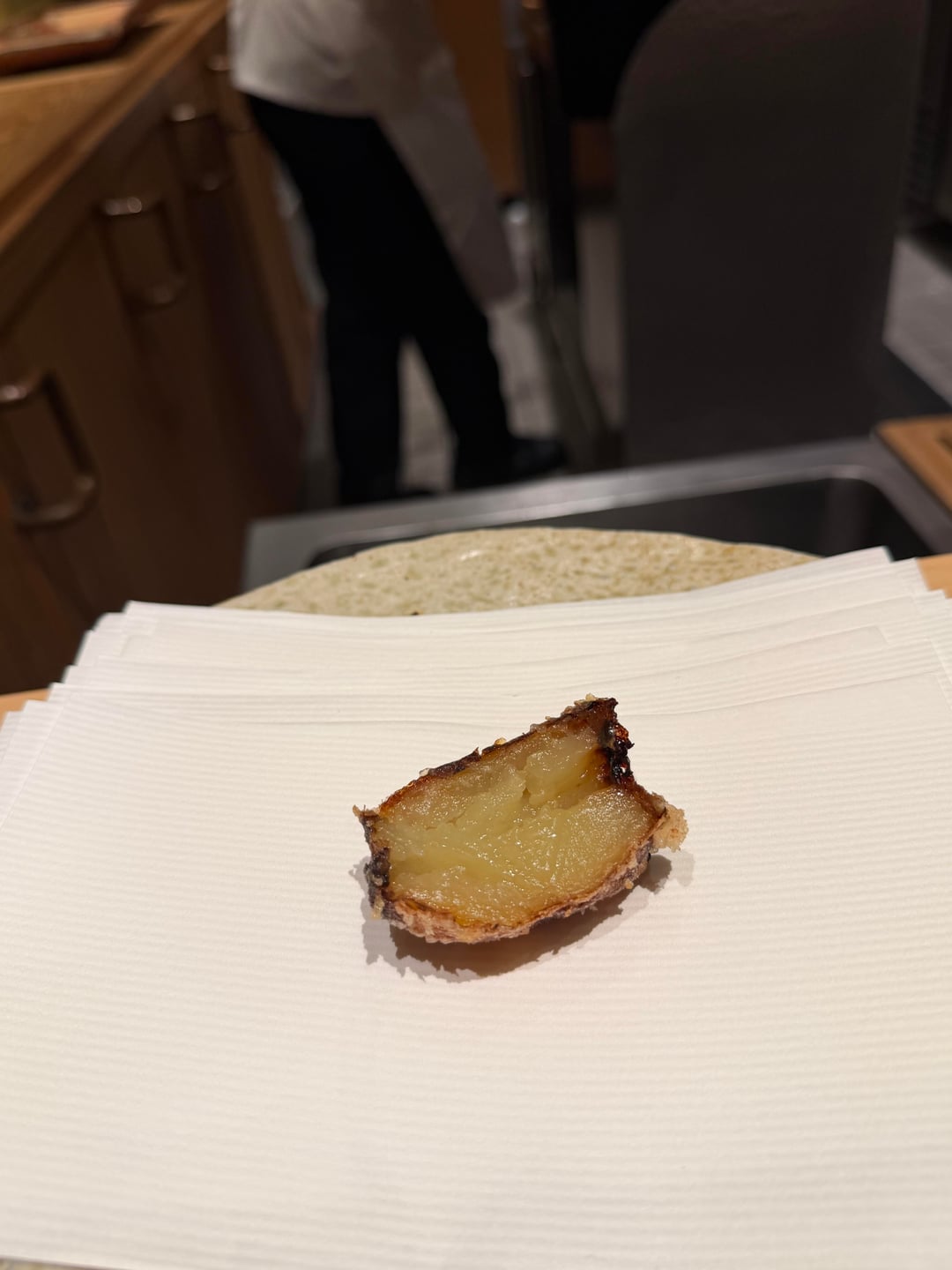
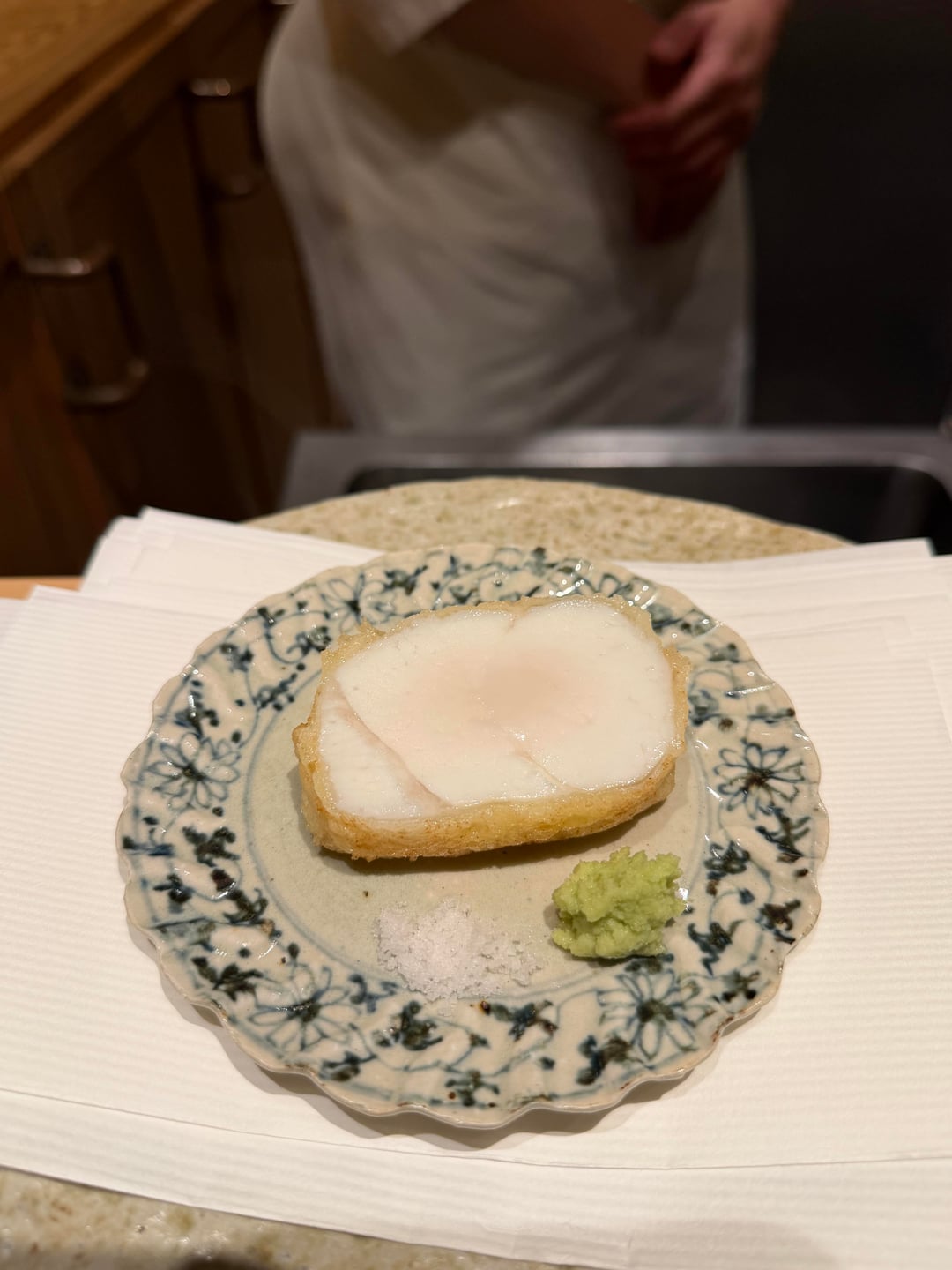
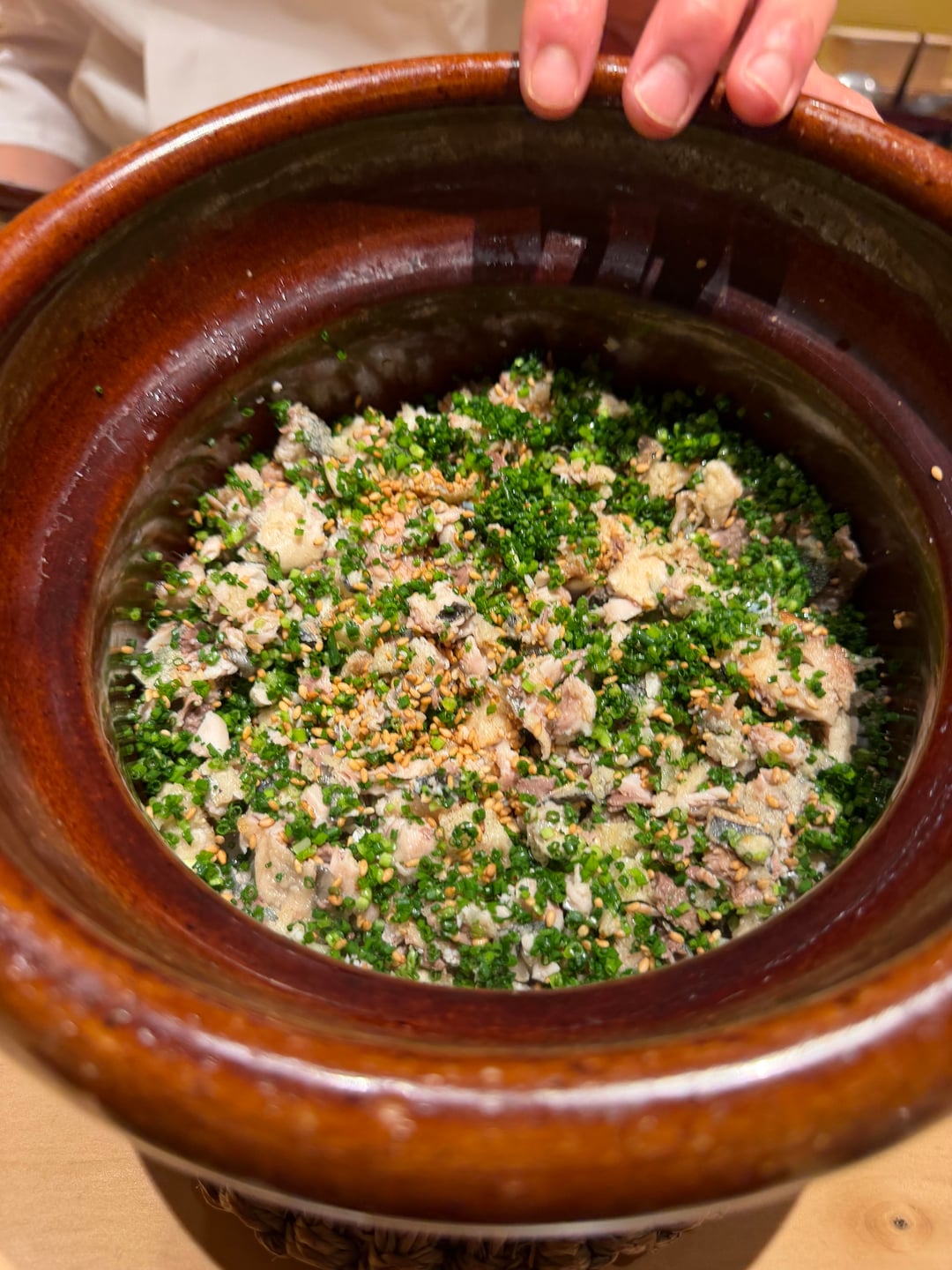
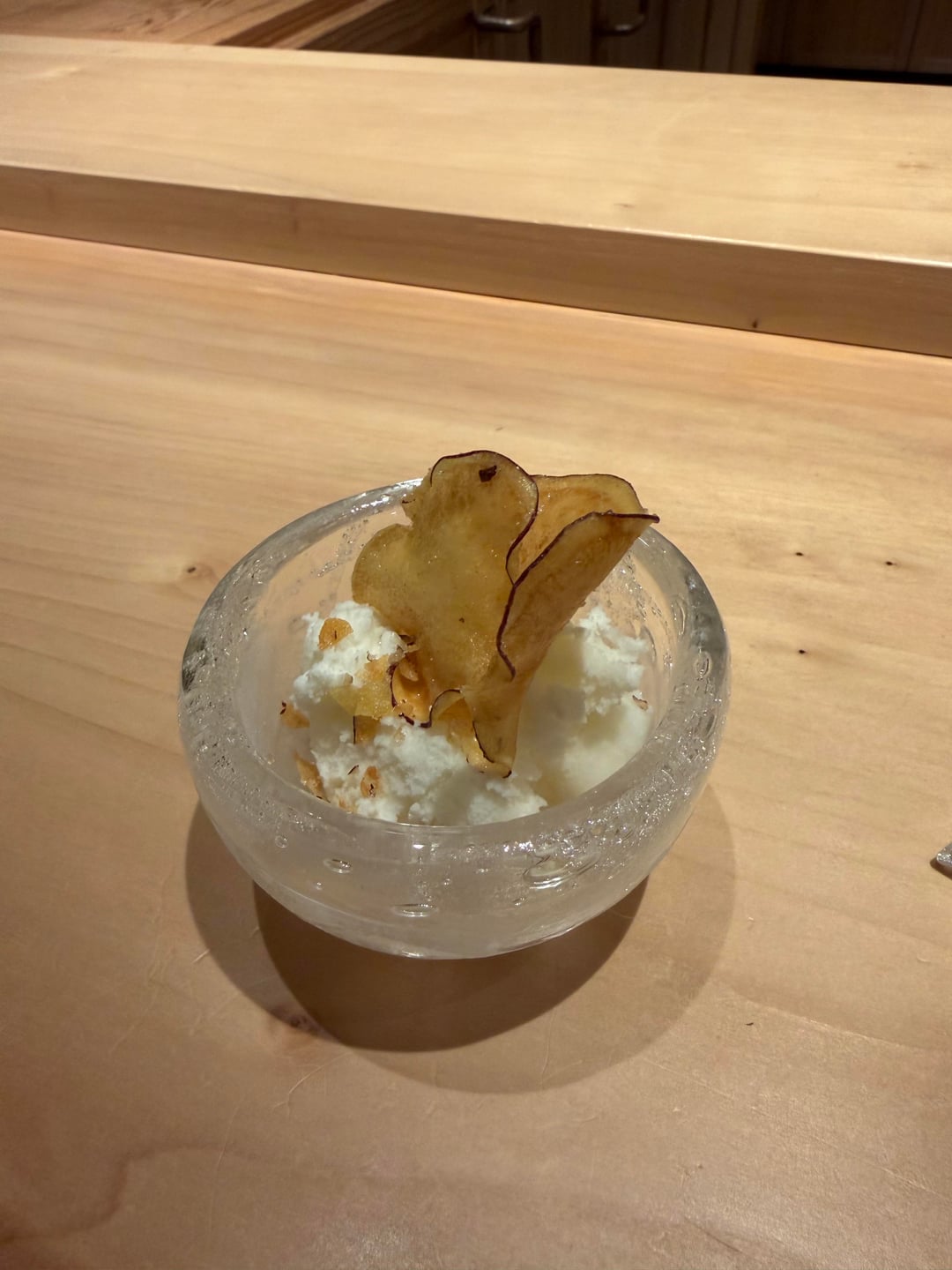
Numata Sou is one of those prodigy helmed restaurants and you can guess where the chef has horned his skill by its name on the door. It is none other than Numata, ‘the’ tempura place of Osaka. To be completely honest, since the reason why I reserved a seat at this place is the fact that I failed to do so on Numata, I did not expect that much from Numata Sou, but surprisingly and pleasantly, my impression at the end was completely shifted from the initial expectation.
What makes Numata Sou stands out in my opinion is their batter, koromo, in Japanese. It has been quite lightly seasoned and more on the airy side of the spectrum in terms of the texture. Since the batter itself is quite subtle, it brings out the flavor of the core ingredient more rather than being a diva on the dish. And the texture of the tempura stands out too, due to its nature. I lack the vocabulary to describe this particular feel, but if I compare how the typical tempura breaks on your mouth to a cracker, this place’ tempura has almost like Sable cookie like feel to it. It is crispy, but not hard.
So, without further ado, these are the items from this evening’s course.
Ingredient showcase, Maitake mushroom. The Japanese restaurants tend to showcase some of the items priorly before the meal. It is a sign that they will be the highlight of the evening.
- 4. Set of appetizers. First, Chawanmushi with Kue -a kind of grouper-. Second, maguro served with spring onions and almond sprinkled on top and the sauce is made out of white miso and mustard. And lastly, Kinjiso, a kind of leaf green with the peanut sauce on top. They were all not particularly unique per se, but properly done.
The beginning of the tempura course, shrimp legs -Kuruma ebi’s- tempura. I was told to eat one with itself and then put some salt on the second one.
- Kuruma ebi tempura, but the regular version of it first and then the ‘rare’ as in cooked rare version on the next picture. This particular dishes in my opinion, showcases their cooking style the most charmingly. If the batter itself tastes strong, you can not appreciate the difference in texture between the normal and the raw version of the each dish. And also the more sweet flavor of the rare Kuruma ebi too. They advised me to enjoy them without putting on anything -usual tentsuyu and the pink salt were offered to supplement the tempuras, by the way- and that was indeed the right way to enjoy it.
Maru okra from Kumamoto
Kisu (Japanese whiting) and senbei made out of the fish bone
Lotus root
Kobashira, surf clam scallop. It was fried skewed first to maintain the shape and then the skew got removed. As shown in the picture, You wrap it with sea weed to enjoy it.
Aka nasu from Kumamoto, Aka (red) egg plant. The biggest difference between the ordinary one and this particular breed is its size. It is massive, therefore it contains more juice inside of it. That makes all the difference.
Maitake mushroom, tennen, which means harvested from nature. Incredible texture and aroma, another great example of the koromo getting its job perfectly.
Tsukimi burger to celebrate the full moon. Half boiled egg yolk, chopped shrimp tempura and cabbages.
Potato tempura. The potato was from Hokkaido prefecture and it has been aged over a year. Never seen or tasted the aged potato. The texture is almost like the baked sweet potato. It has that distinct stickiness to it and the transparency on the surface too. It also has the slightest hint of sweetness, but that might have been the trick of my mind, since it really looked like a sweet potato. One dish that surprised me most.
Last and a sort of ‘main dish’ for the tempura portion, Kue (grouper) from Kumamoto. I was told to enjoy the fattiness nature of the fish and freshly ground wasabi did amazing job to support it.
The first rice dish, Tenbara gohan (rice pot). Sanma (saury) tempura was prepared first and then minced to be the part of the tenbara gohan. Unfortunately, I only filmed the video for the second rice dish and it was tamago kake gohan, a bowl of rice with a raw egg on top of it. In their rendition, the raw egg got bathed with fry batter and then transformed into tempura. It is done to still maintain the original rice bowl’s characteristic which is to enjoy the egg yolk as a sauce, but also, to have the layer of fry batter so that we can enjoy it as a tempura.
Lastly, dessert, home made ice cream made out of goat milk and sweet potato chip that has been freshly fried. You can choose to add either Japanese sake or aged apple vinegar to complement it. I chose the vinegar after I ate the half of it. In my opinion. In my opinion, it is another great example of chef’s talent on selecting the ingredients.
by ExSogazu


2 Comments
Lovely, we booked for lunch next month and wonder if it’ll be the same menu as served at dinner or if it’s an abbreviated one. There wasn’t any notes of it when booking.
How were interactions with the chef/staff?
Have only been to Numata main branch once and it was just ok for me. Don’t think you are missing much by not going to the main branch if you enjoyed your meal here. They do seem to have high quality ingredients but there was just too much coating for me